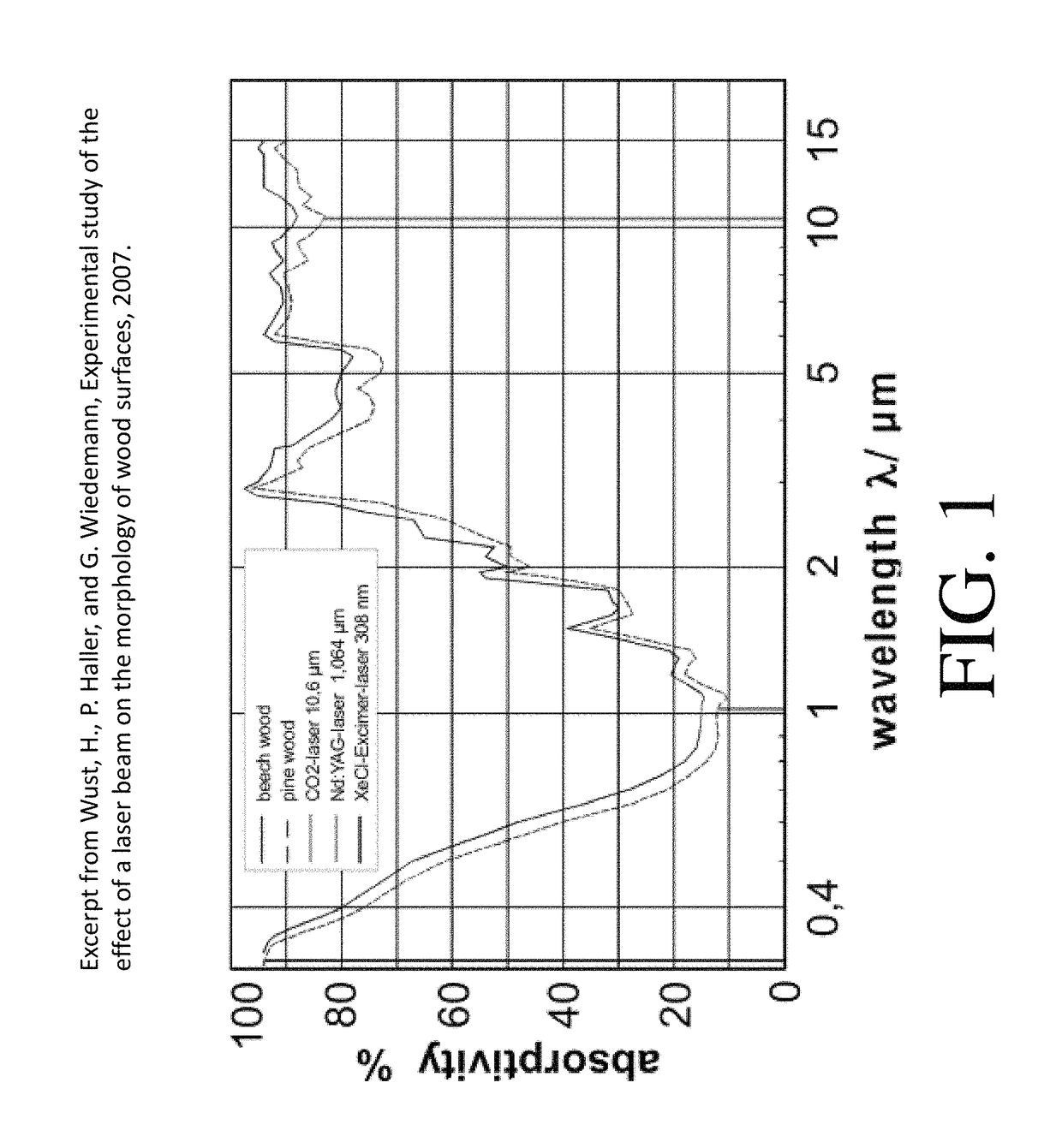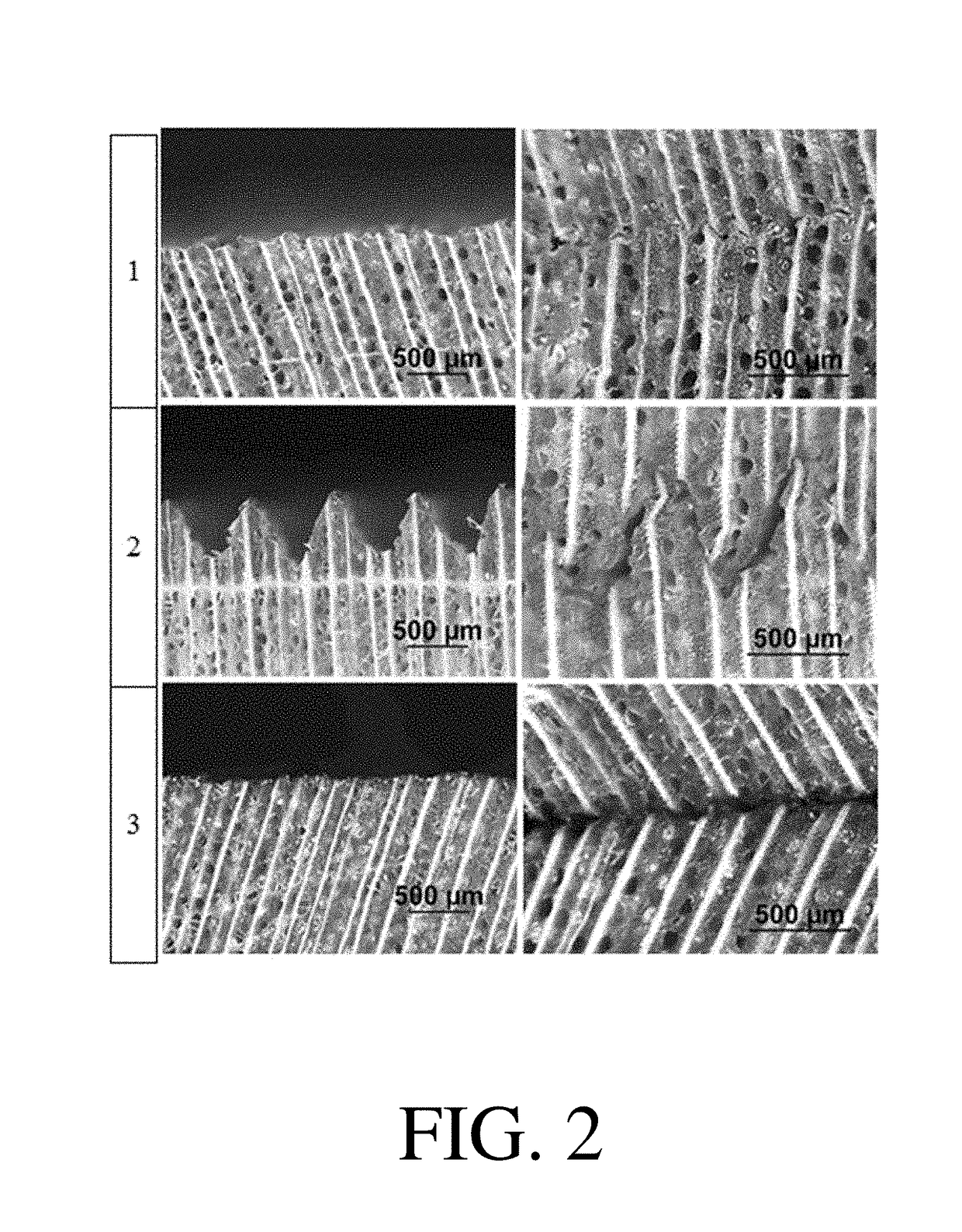Process for bonding lignocellulosic substrates without an added adhesive and products thereof
a technology of lignocellulosic substrates and adhesives, which is applied in the direction of lamination ancillary operations, other plywood/veneer working apparatus, wood layered products, etc., can solve the problems of requiring petroleum-based additives and the flow of wood surface, and achieve the effect of affordable cos
- Summary
- Abstract
- Description
- Claims
- Application Information
AI Technical Summary
Benefits of technology
Problems solved by technology
Method used
Image
Examples
example 1
[0082]Methods and Materials
[0083]The two wood species used in all the experiments were southern yellow pine (SYP) and yellow poplar. A Universal V460 60 Watt CO2 pulsed laser was used modify the wood surfaces. For all the IB tests small veneer samples (2″ width by 2″ length by ⅛″ thickness) were modified for bonding.
[0084]A miniature hot press at 180° C. and 450 psi was used to provide intimate surface interaction. AutoCAD vector programs were used to communicate with the laser for modification as seen in FIGS. 6A and 6B. The laser focus was the distance from the laser head to the sample. This distance combined with the laser power and speed makes it possible to control the depth of penetration into the surface and also the width of the laser beam. Controlling the laser makes it possible to create custom geometries that influence different degrees of mechanical interlock or chemical modification.
[0085]Several different combinations of laser treatments were explored using laser line ...
example 2
[0099]Materials and Methods
[0100]Materials
[0101]3.2 mm thick “Grade A” Yellow-poplar (Liriodendron tulipifera) and southern yellow pine (Pinus spp.) rotary-peeled veneer were obtained from a southeastern US laminated veneer mill. The as-received 60×60 cm samples were conditioned to 12% moisture content in a walk-in environmental humidity controlled room.
[0102]Methods
[0103]Wood veneer samples were cut into 5 cm squares and modified utilizing a ULS-V460 60 W carbon dioxide laser with high power density focusing optics, resulting in a circular spot size with a diameter of approximately 50 μM. For the design of experiment testing, laser wattages of 3 to 15 W were utilized, with the laser moving at a constant 0.5 m / s, at 40,000 pulses per meter. Specific parameters utilized in the ULS print driver included a maximum image density of 6, tuning of zero, while utilizing vector mode. The trajectory of the laser was designed in AutoCAD, using the smallest resolution usable by the laser betwee...
PUM
| Property | Measurement | Unit |
|---|---|---|
| temperature | aaaaa | aaaaa |
| pressure | aaaaa | aaaaa |
| temperature | aaaaa | aaaaa |
Abstract
Description
Claims
Application Information
 Login to View More
Login to View More - R&D
- Intellectual Property
- Life Sciences
- Materials
- Tech Scout
- Unparalleled Data Quality
- Higher Quality Content
- 60% Fewer Hallucinations
Browse by: Latest US Patents, China's latest patents, Technical Efficacy Thesaurus, Application Domain, Technology Topic, Popular Technical Reports.
© 2025 PatSnap. All rights reserved.Legal|Privacy policy|Modern Slavery Act Transparency Statement|Sitemap|About US| Contact US: help@patsnap.com



